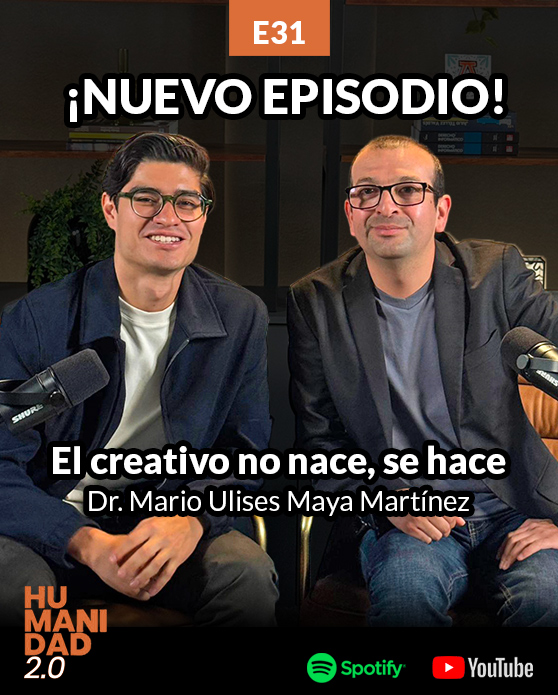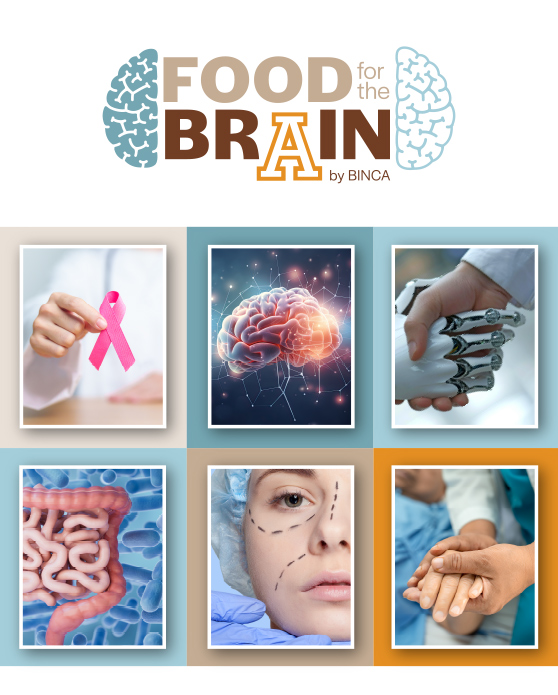
October 10, 2025
Author: Juan Manuel Palomares Cantero
Versión en español
Can technology be born out of suffering and become an act of love for life? The history of Mazda seems to answer yes. The 20th century was marked by devastation and technological wonder, but few trajectories reveal so clearly the possibility of reconciling progress with human dignity. Founded in Hiroshima, a city that would come to know the absolute limit of human power, Mazda did not only emerge as an automotive company, but as a symbol of moral reconstruction: from mastery over matter to service to the person, from technical ashes to creative solidarity. From its artisanal origins, dedicated to transforming natural cork into useful material, to the refined engineering of Jinba Ittai, the company has expressed a humanistic understanding of work and innovation, where technique becomes an extension of care, a mediation between ingenuity and life.
Faithful to its mission of enriching people’s lives through movement, Mazda demonstrates that justice, solidarity, subsidiarity, and the common good can also inspire technological activity when oriented toward service to the person. Where the machine could depersonalize, Mazda proposes communion; where progress could break bonds, it offers care. Its defiant and radically human spirit reflects the conviction that authentic development does not consist in accelerating innovation, but in reconciling it with human dignity. Thus, movement ceases to be mere displacement to become an experience that elevates the senses, nourishes the spirit, and honors life.
The Origin of a Gesture that Unites Cork with the Movement of Life
Mazda’s origins date back to 1920, when under the name Toyo Cork Kogyo Co., it began manufacturing natural cork in Hiroshima. In a Japan barely entering industrialization, that choice revealed a relationship with nature based on harmony and respect, not exploitation. Cork—a light, recyclable, and living material—symbolized a way of producing from life itself, without imposing upon it. From its beginnings, the company embodied an ethics of work that sought to transform without harming and to create with a sense of balance. In that foundational practice was expressed an understanding of progress as collaboration between human creativity and nature, where technique was not domination but accompaniment. That first stage anticipated the conviction that still guides Mazda: to generate movement that gives life, not that exhausts it.
The transition toward industrial mechanics and the creation of the Mazda-Go motorized tricycle in 1931 continued this logic of service. Light, accessible, and reliable, the tricycle did not aspire to prestige but to usefulness, offering mobility to small merchants and workers in a time of reconstruction. Its design represented a concrete form of solidarity applied to technique—an innovation oriented toward everyday well-being. Since then, Mazda understood that authentic development does not consist in conquering matter but in putting it at the service of justice and the common good, making progress an expression of responsibility and respect for the life that sustains all movement.
Hiroshima and the Wound that Gave Birth to a Morally Founded Policy
On August 6, 1945, Hiroshima became the visible limit of human power and the deepest symbol of the suffering caused by technology without conscience. In an instant, the city was reduced to ruins, and with it collapsed the illusion of progress detached from morality. Among the survivors, Mazda’s founder decided to keep the factory—then Toyo Kogyo—alive and turn it into a space for reconstruction, hope, and service. From that fragility emerged not only a new theory but a practical morality that ethics can interpret and sustain: a business policy that transformed technology into an instrument of care, productivity into a gesture of solidarity, and development into an expression of justice. Hiroshima did not generate an abstract discourse but a concrete form of action guided by the awareness that physical life is the first good and human dignity, the measure of all responsible action.
The reconstruction that followed did not represent an economic recovery but a moral commitment to the common good. In the shared work of the survivors, solidarity and subsidiarity were embodied as lived principles, not proclaimed ones. Where technology had destroyed, Mazda promoted an organizational policy centered on serving life rather than dominating it. Faithful to its purpose of enriching people’s existence through movement, the company turned adversity into a lucid awareness that endures: the conviction that progress is only human when it respects life and promotes the dignity of those who live it.
The Unity Between Body and Machine in the Philosophy of Jinba Ittai
In Japanese tradition, the principle of Jinba Ittai—“rider and horse in unity”—expresses the communion between the human body and the instrument that extends its action. Mazda made this philosophy the core of its technical identity, understanding that the vehicle must be a natural extension of human movement and not a substitution for its freedom. In this conception, technology does not oppose the person but cooperates with them, integrating mind, body, and environment into a single dynamic harmony. Jinba Ittai thus becomes a moral response to contemporary technological uprooting: where automation tends to depersonalize, Mazda proposes a respectful reciprocity between the human and the technical, reminding us that corporeality does not limit progress but gives it meaning and direction.
From this perspective, automotive design becomes a form of applied justice: every innovation seeks to adapt to the human being, strengthen their autonomy, and preserve their vital bond with the world. Faithful to its defiant and radically human spirit, Mazda translates subsidiarity into a technical principle that places dignity and freedom at the heart of engineering. In a world fascinated by speed and artificial intelligence, the company proposes a pedagogy of balance: uniting precision with empathy, power with care. Thus, the machine ceases to be an instrument of alienation to become a companion in life—a reflection of a technology that accompanies, respects, and elevates the human condition.
The Company as a Moral Community Oriented Toward the Common Good
In its later development, Mazda did not conceive of itself as a corporation guided only by performance but as a moral community where technology, work, and culture are integrated around a common principle: respect for the person and for the land that sustains them. From Hiroshima, the company understood that production can also be an act of care, and that true efficiency arises from cooperation between ingenuity and virtue. Thus, productivity ceased to be an end in itself to become a form of shared responsibility. Mazda assumed that the legitimacy of an organization is not measured by its expansion but by its ability to generate human well-being and environmental balance. Faithful to its purpose of enriching life through movement, the company oriented its growth toward mobility that fosters relationships, hope, and community spirit.
Subsidiarity became visible in its internal structure by recognizing in each worker a source of creativity and value, where innovation arises from below and leadership is exercised as service. Work ceased to be alienating to become an experience of belonging, and production, a form of collaborative solidarity. Mazda thus became a school of civic and professional virtues: prudence in design, justice in management, fortitude in adversity, and temperance in success. Its corporate policy, with a profound ethical sense, seeks to care for the material, symbolic, and spiritual conditions of the community that forms it. In this balance between person, body, technique, and society, Mazda embodies a modernity reconciled with life, where the company is also a form of service to the common good.
Conclusions
The history of Mazda demonstrates that technology, when born from respect for life and oriented toward service to the person, can become a concrete form of compassion. From the humble cork workshop to the precise engineering of Jinba Ittai, the company has embodied the conviction that authentic progress does not consist in mastering matter but in caring for it. Hiroshima marked its corporate morality with an indelible imprint: the awareness that all innovation without conscience destroys, and that only care rebuilds. Thus, Mazda transformed movement into a symbol of hope, productivity into a gesture of justice, and technology into a mediation of solidarity. Its trajectory is, at its core, a moral pedagogy of progress: to create without devastating, to advance without dehumanizing, to transform without forgetting the fragility that unites us.
This vision challenges us beyond the automotive industry: can every company, every science, every human endeavor also assume this ethics of care? Mazda teaches that technology reaches its fullness only when it becomes an act of shared responsibility—when it elevates existence instead of diminishing it. In a reality where development threatens to lose its human meaning, its history reminds us that dignity, justice, and solidarity are not accessory values but the silent engine of every possible future. Perhaps that is the great lesson Hiroshima leaves transformed into movement: that true progress is not measured in speed or power but in a society’s ability to keep creating without ceasing to love.
Juan Manuel Palomares Cantero is a lawyer, master, and doctor in Bioethics from the Universidad Anáhuac, Mexico. He was Director of Human Capital, Director, and General Coordinator at the Faculty of Bioethics. He currently serves as a researcher in the Academic Directorate of Integral Formation at the same university. He is a member of the Mexican National Academy of Bioethics and the Latin American and Caribbean Federation of Bioethics Institutions. This article was assisted in its writing by the use of ChatGPT, an artificial intelligence tool developed by OpenAI.
The opinions expressed in this blog are the sole responsibility of their authors and do not necessarily represent the official position of CADEBI. As an institution committed to inclusion and plural dialogue, CADEBI promotes and disseminates a diversity of voices and perspectives, with the conviction that respectful and critical exchange enriches our academic and formative work. We value and encourage all comments, responses, or constructive criticism you wish to share.
1. Mazda Motor de México. (2025). Nuestro propósito: enriquecer la vida de las personas a las que servimos a través del movimiento. Recuperado de mazda.mx/acerca-de-mazda/proposito
2. Yoshioka, T., Sunahara, O., Takahara, Y., Umetsu, D., Matsuoka, H., Yamamoto, T., Kaneshina, N., Shimizu, R., & Takahashi, J. (2017). SKYACTIV TECHNOLOGY to enhance ‘Jinba-Ittai’. En P. E. Pfeffer (Ed.), 8th International Munich Chassis Symposium 2017 (pp. 429-446). Springer Vieweg. doi.org/10.1007/978-3-658-18459-9_28
3. Catana, Ş., & Toma, S.-G. (2021). Marketing mix and corporate social responsibility in automotive industry: Case study: Mazda Motor Corporation. En Annals of the “Constantin Brâncuşi” University of Târgu Jiu, Economy Series (número 1).
4. Ito, T. (2015). Reconstruction of Hiroshima Industry 1945-1960 [Artículo]. The Bulletin of the Center for Research on Regional Economic Systems, Hiroshima University, 26, 3-15.
5. Bloch, E. (2004). El principio esperanza (Vols. 1–3). Trotta.
6. Nussbaum, M. C. (2011). Creating Capabilities: The Human Development Approach. Harvard University Press.
7. Lévinas, E. (1982). Ética e infinito: diálogos con Philippe Nemo. Ediciones 70.
8. Jonas, H. (2014). El principio de responsabilidad: Ensayo de una ética para la civilización tecnológica. Herder.
9. UNESCO. (2005). Declaración universal sobre bioética y derechos humanos. UNESCO. Recuperado de unesdoc.unesco.org/ark:/48223/pf0000146180_spa
More information:
Centro Anáhuac de Desarrollo Estratégico en Bioética (CADEBI)
Dr. Alejandro Sánchez Guerrero
alejandro.sanchezg@anahuac.mx





